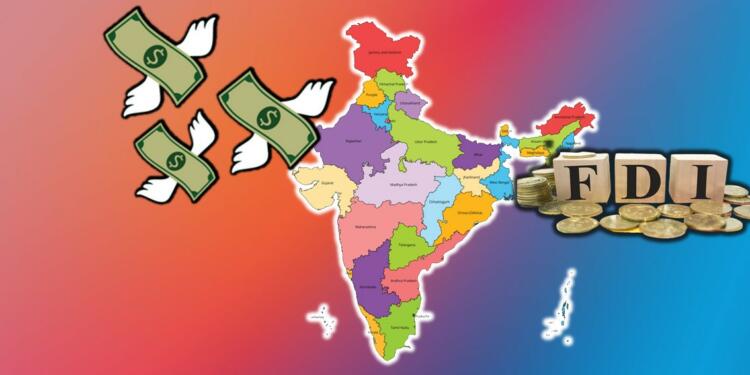In the last few years, global investors have placed massive trust in India as it is arguably the only place of stability amid ongoing massive disruptions. As per data from the Ministry of Commerce and Industry, India received Foreign Direct Investment worth 84 billion dollars in FY 22, which is the highest ever in India’s history.
“India is rapidly emerging as a preferred country for foreign investments in the manufacturing sector,” the ministry said. “India has recorded highest ever annual FDI inflow of USD 83.57 billion in the Financial Year 2021-22,” it noted.
Even more important is the increase in FDI in manufacturing sector as the government is aggressively promoting India as an alternative to China for global manufacturing amid ongoing supply chain disruptions and trade war. FDI equity inflow in manufacturing sectors has increased by 76 per cent in 2021-22 (USD 21.34 billion) compared to 2020-21 (USD 12.09 billion). The FDI is manufacturing will a large number of jobs which India desperately needs at this time.
For the past few years, Karnataka has overtaken Maharashtra as the top investment destination with its business-friendly policies. Karnataka was the top recipient state with a 38% share of the total FDI equity inflows reported during 2021-22, followed by Maharashtra.
Computer software and hardware emerged as the top recipient sector of FDI equity inflows during the last fiscal year with an around 25% share, followed by the services and automobile sectors, both at 12%. The high inflow in computer software and hardware is reflected in the fact Karnataka, which houses India’s silicon valley (Bengaluru) has emerged as the top destination for foreign investors.
Singapore was the topmost investor in India last fiscal year, accounting for 27% of the FDI, followed by the US at 18% and Mauritius at 16%.
The political stability in the country and a reformist government coupled with a demographic dividend are the right mixtures for the economic growth of any country and India has all these ingredients at this time. Investors around the world are convinced that the long-term story of India’s growth is going to be positive, in spite of short-term setbacks like Coronavirus.
The policy analysts, economists and corporate houses around the globe have given positive reviews about the economic policies of the Modi government. Some of the most important economic reforms which were waiting in the policy corridors for the last few decades like- farm laws, labour laws, GST, Insolvency law, rationalisation of corporate and income tax, were implemented by the Modi government in the last few years.
The GST was waiting for implementation in the policy corridors for almost three decades, as the previous governments could not bring all the stakeholders together to implement the uniform indirect taxation. But the Modi government has been able to build consensus for the implementation of GST in one of the most complex markets around the world. GST has helped increase the number of indirect as well as direct taxpayers. Top economists have predicted that GST will improve the GDP growth of the country by 1-2 per cent.
Similarly, the IBC is solving the bad loans crisis of the Indian economy, which has slowed down the credit for the past decade. Given the structural reforms in the Indian economy, the long-term prospects look better for India when compared to the rest of the world which is dealing with acute slowdown and hopelessness amid the pandemic.
The market in India is flooded with liquidity and once the danger of Coronavirus ends, there will be a huge surge in FDI as well as consumer spending. Many sectors like Information technology, financial services, and agriculture are already performing better than in the pre-pandemic years, thanks to economic reforms and fundamental changes in the macroeconomy brought due to Coronavirus. The other sectors too will pick up once the threat of the virus is over, and the economy will grow like never before.




























